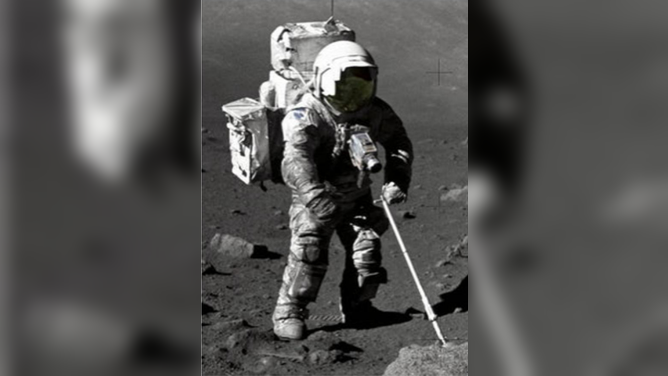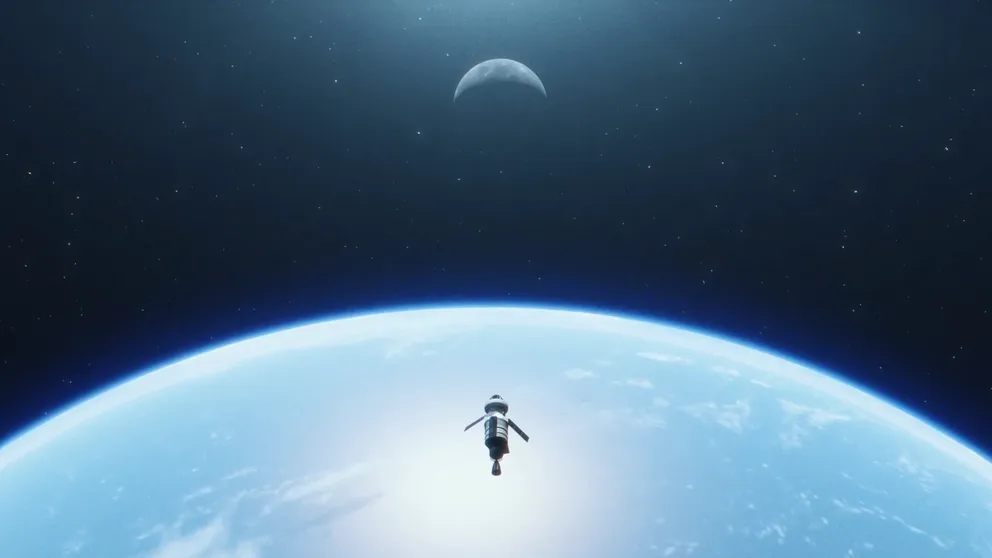Apollo 17 astronauts gathered lunar rocks leading to discovery of Moon's true age
Researchers re-analyzed lunar dust collected during the Apollo 17 mission and found evidence that would push back the age of the Moon by about 40 million years.
Artemis 1 mission: Relive Orion's historic journey to the moon before splashdown
Splashing down on December 11, the successful completion of the Artemis I mission paves the way for future expeditions to Mars and other destinations in the solar system.
Scientists have taken a renewed look at samples collected from the Moon during the last Apollo mission and now estimate the Moon formed about 40 million years earlier than previously thought.
During the Apollo 17 mission to the Taurus-Littrow highlands and valley on the Moon, NASA astronauts Eugene Cernan and Harrison Schmitt collected about 243 pounds of lunar material. The Moon rocks and materials have been preserved, stored and studied at the Lunar Sample Laboratory Facility at NASA's Johnson Space Center for over 50 years.
The authors of a new study published in the Geochemical Perspective Letters used updated techniques to determine the crystallization ages for the Apollo 17 lunar samples and say they have found the oldest material yet from the Moon.
Using minerals in lunar dust known as zircon, the scientists used a method called atom probe tomography to show how many atoms inside the zircon crystals have undergone radioactive decay.

A scanning electron microscopy image of a grain of lunar zircon - (Image credit: Dr. Jennika Greer)
"These crystals are the oldest known solids that formed after the giant impact. And because we know how old these crystals are, they serve as an anchor for the lunar chronology," study senior author Philipp Heck, with the University of Chicago, said in a statement.
Apollo 17 lunar sample found to be at least 4.46 billion years old
According to NASA, the leading theory of the Moon's formation is that a Mars-sized body collided with Earth about 4.5 billion years ago, and the debris from Earth and the impacter created our only satellite, but exactly when that happened is still unknown.
When the impact that formed the Moon happened, the force melted the rock, eventually becoming the Moon’s surface.
"When the surface was molten like that, zircon crystals couldn’t form and survive. So any crystals on the Moon’s surface must have formed after this lunar magma ocean cooled," said study lead author Jennika Greer, with the University of Glasgow. "Otherwise, they would have been melted, and their chemical signatures would be erased."
An atom-by-atom analysis conducted using instruments at Northwestern University showed how many atoms in the crystals underwent radioactive decay. The proportion of lead isotopes indicated that the sample was at least 4.46 billion years old, according to the study authors.

Apollo 17 Astronaut Harrison "Jack" Schmitt coated by lunar dust.
(NASA)
"It’s amazing being able to have proof that the rock you’re holding is the oldest bit of the Moon we’ve found so far," Greer said. "It’s an anchor point for so many questions about the Earth. When you know how old something is, you can better understand what has happened to it in its history."
The lunar samples provide evidence for the formation of the Moon within 110 million years after the solar system's formation.
NASA'S ORION SPACECRAFT OFFERS LAST BREATHTAKING VIEWS OF THE MOON AS IT BEGINS JOURNEY HOME
Heck said it's important to try and find the formation age of the Moon because it's a small piece of a bigger picture.
"The Moon is an important partner in our planetary system - it stabilizes the Earth’s rotational axis, it’s the reason there are 24 hours in a day, it’s the reason we have tides," Heck said. "Without the Moon, life on Earth would look different."
In a few years, NASA astronauts will once again collect samples and conduct geology on the surface of the Moon as part of the Artemis program. This time, the exploration will be on the lunar South Pole.
